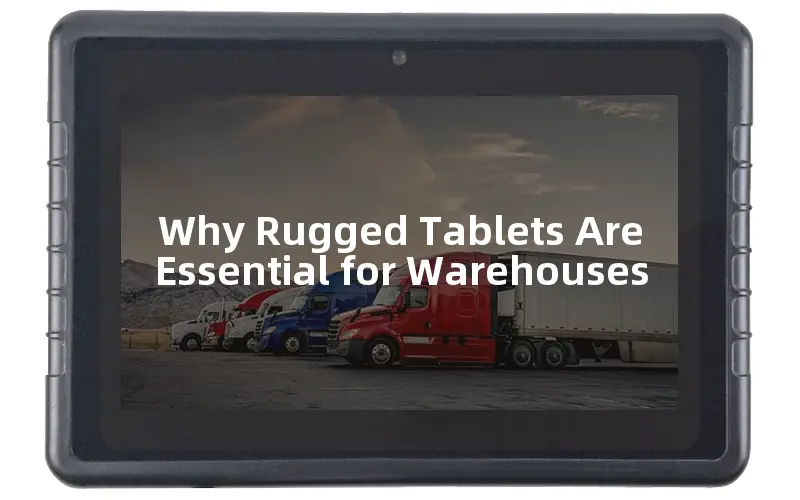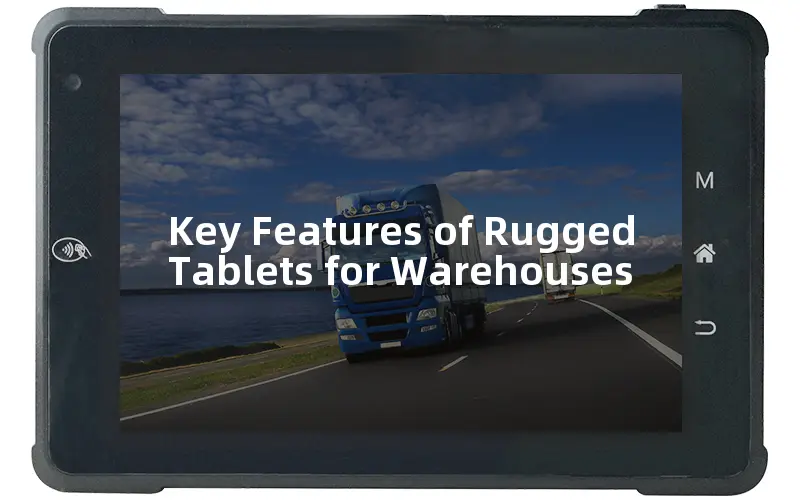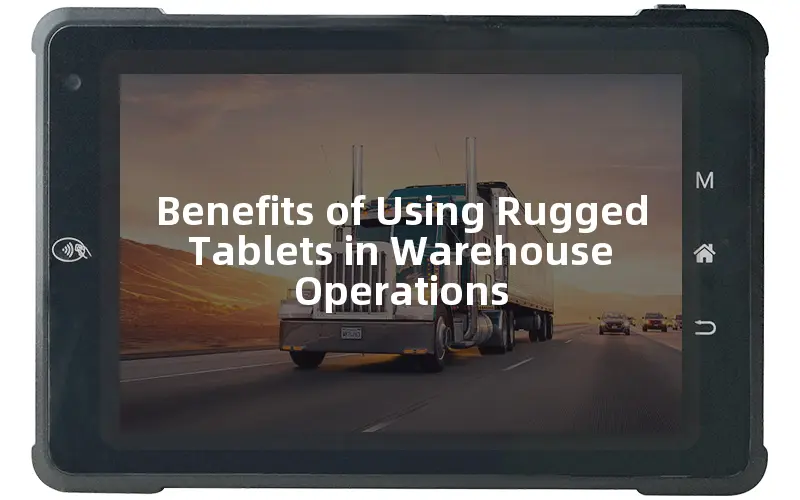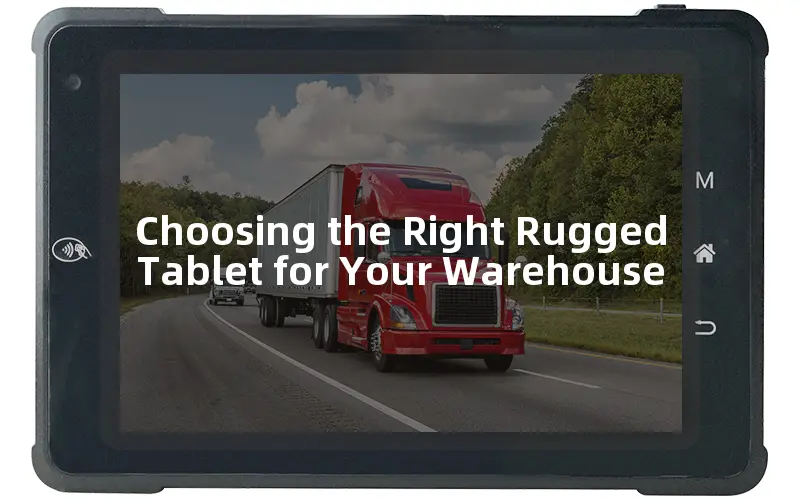In the fast-paced world of logistics and warehousing, technology plays a pivotal role in ensuring operational efficiency. Warehouses are dynamic environments where the need for robust and reliable equipment is paramount. Among the essential tools driving modern warehouses are rugged tablets—devices that are specifically engineered to withstand harsh conditions while delivering superior performance. This article delves into why rugged tablets are an indispensable asset for warehouses, offering insights into their durability, functionality, and integration capabilities.
Why Rugged Tablets Are Essential for Warehouses

Durability and Resilience in Harsh Conditions
Warehouses are environments where dust, moisture, extreme temperatures, and rough handling are common. Ordinary consumer-grade tablets are not designed to endure such conditions, making them prone to frequent breakdowns and costly replacements. In contrast, rugged tablets are built to last, featuring reinforced frames, shock-absorbing materials, and water-resistant designs that comply with industry standards such as IP65 and MIL-STD-810G. These specifications ensure that rugged tablets can withstand drops, vibrations, and exposure to liquids without compromising performance.
Enhanced Productivity and Workflow Optimization
Rugged tablets are more than just durable; they are powerful tools that streamline workflows and enhance productivity in warehouses. With high-performance processors, ample RAM, and fast SSD storage, these devices can handle complex tasks, such as inventory management, real-time data collection, and order processing. The use of rugged tablets in warehouse operations reduces the time spent on manual data entry, minimizes errors, and ensures that information is updated in real-time, enabling faster decision-making and improved accuracy.
Seamless Integration with Warehouse Management Systems (WMS)
One of the critical advantages of rugged tablets is their ability to seamlessly integrate with existing Warehouse Management Systems (WMS). These tablets support various operating systems, including Windows, Android, and Linux, making them compatible with a wide range of WMS platforms. The integration allows warehouse staff to access inventory levels, track shipments, and manage orders directly from the tablet, all while on the move. This mobility ensures that employees are always connected to the central system, improving coordination and reducing bottlenecks in the workflow.
Key Features of Rugged Tablets for Warehouses

Long Battery Life for Extended Operations
Warehouse operations often require long hours of continuous work, and devices that run out of power midway can significantly disrupt productivity. Rugged tablets are equipped with long-lasting batteries that can power the device for an entire shift or even longer. Some models offer hot-swappable batteries, allowing users to replace the battery without shutting down the device, ensuring uninterrupted operations.
Advanced Connectivity Options
In a warehouse setting, connectivity is crucial for ensuring smooth communication and data transfer. Rugged tablets come with a range of connectivity options, including Wi-Fi, Bluetooth, 4G LTE, and even 5G in some advanced models. These options ensure that the tablets remain connected to the network, whether on the warehouse floor, in remote storage areas, or even during transportation. The inclusion of GPS also aids in tracking assets and managing logistics more effectively.
High-Resolution Displays and Touchscreens
The harsh lighting conditions in warehouses can make it challenging to read screens on standard devices. Rugged tablets are equipped with high-resolution displays that offer excellent visibility even in bright or low-light environments. The touchscreens are designed to be responsive, even when used with gloves, making them ideal for warehouse workers who need to operate the devices while handling materials.
Customizable and Scalable Solutions
Every warehouse has unique needs, and rugged tablets offer customizable solutions that can be tailored to specific operational requirements. From barcode scanners and RFID readers to vehicle mounts and docking stations, rugged tablets can be equipped with a variety of peripherals to enhance their functionality. Additionally, these tablets are scalable, meaning they can be upgraded or expanded as the business grows, ensuring long-term value.
Benefits of Using Rugged Tablets in Warehouse Operations

Reduction in Downtime and Maintenance Costs
The durability of rugged tablets significantly reduces the need for repairs and replacements, leading to lower maintenance costs and less downtime. This reliability ensures that warehouse operations run smoothly, without the frequent interruptions caused by device failures. The rugged design also means that these tablets have a longer lifespan, providing a better return on investment compared to consumer-grade devices.
Improved Accuracy and Data Management
Rugged tablets enable warehouse staff to capture and process data in real-time, reducing the risk of errors associated with manual entry. This accuracy is crucial for inventory management, order fulfillment, and shipping, where mistakes can lead to costly delays and customer dissatisfaction. The ability to quickly scan barcodes, update inventory levels, and track shipments ensures that data is always current and reliable.
Enhanced Employee Safety and Ergonomics
The design of rugged tablets takes into account the ergonomics of warehouse work. These devices are lightweight, portable, and easy to handle, reducing the physical strain on employees. Additionally, the rugged construction means that they can be used in environments where there is a risk of dropping or bumping into objects, enhancing workplace safety. The ability to operate the tablets with gloves also ensures that workers are protected while using the devices.
Choosing the Right Rugged Tablet for Your Warehouse

Assessing Your Warehouse Needs
When selecting a rugged tablet for your warehouse, it is essential to consider the specific needs of your operation. Factors such as the size of the warehouse, the nature of the goods handled, and the existing technological infrastructure should guide your decision. For instance, if your warehouse deals with hazardous materials, you may need a tablet that is certified for use in explosive environments.
Evaluating Key Specifications
Look for rugged tablets that offer a balance of performance and durability. Key specifications to consider include processor speed, RAM, storage capacity, battery life, and connectivity options. It is also important to consider the operating system, as this will determine the compatibility with your WMS and other software applications.
Considering Total Cost of Ownership
While rugged tablets may have a higher upfront cost compared to consumer-grade devices, it is important to consider the total cost of ownership (TCO). The long lifespan, reduced maintenance costs, and increased productivity offered by rugged tablets often result in lower TCO over time. Investing in a high-quality rugged tablet can lead to significant cost savings and operational benefits in the long run.
Conclusion
In conclusion, rugged tablets are an essential tool for modern warehouse operations. Their durability, functionality, and ability to integrate with existing systems make them invaluable in enhancing productivity, accuracy, and safety in the warehouse environment. As warehouses continue to evolve and adopt more advanced technologies, rugged tablets will play a critical role in driving efficiency and ensuring that operations run smoothly and effectively.
link:https://www.waysion.com/blog/rugged-tablets-for-warehouse-efficiency/
评论
发表评论